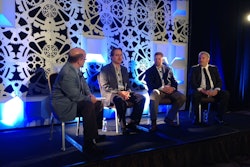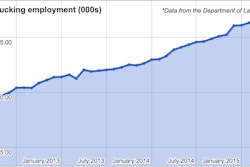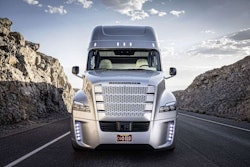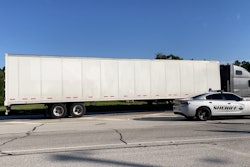 Trucking economist Noel Perry speaking at the ALK Transportation Technology Summit on May 5. Photo courtesy of ALK Technologies
Trucking economist Noel Perry speaking at the ALK Transportation Technology Summit on May 5. Photo courtesy of ALK TechnologiesOn May 5, trucking economist Noel Perry opened the 2015 ALK Transportation Technology Summit with a prophetic statement.
“We are about to be saved sometime over the next 10 years by radical advances in technology, exactly the kind you are about to hear about the rest of the day,” said Perry, the founder of Transportation Economics.
This statement came at the conclusion of his talk in which he described the current and long-term impact of the capacity crisis from a truck driver shortage and onerous government regulations.
The trucking economy has recovered nicely since 2010 and Perry forecast 3.2 percent growth through 2016, but warned that a global debt crisis carries a major risk of drawing the U.S. economy into recession within the next five years.
Enforcement of the electronic logging device mandate, which is expected to start in late 2017, will create a long-term driver shortage of 80,000 and structural change in the way drivers are compensated and managed, said Perry, who described himself as “the guy in the industry that quantifies the intangibles.”
Perry concluded his remarks with a chart that quantified the savings of technology advancements – all of which he believes will be in play by 2020. The total savings from the increased productivity, fuel efficiency, safety, and driver costs of these technologies will be more than $1.00 per mile, he said.
Meanwhile, at a press event in Las Vegas, NV, Freightliner announced a new autonomous truck called the Inspiration that is commercially viable and completely legal to operate on Nevada highways. The future technologies Perry referenced may be available much sooner than planned.
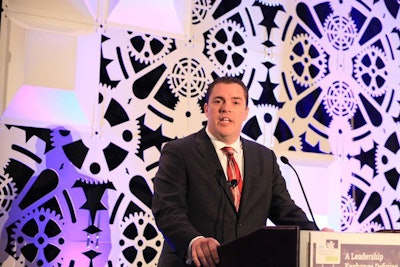 Jeff Champa, senior director of product management for Omnitracs, discusses the evolution of navigation at the ALK Technology Summit on May 5. Photo courtesy of ALK Technologies
Jeff Champa, senior director of product management for Omnitracs, discusses the evolution of navigation at the ALK Technology Summit on May 5. Photo courtesy of ALK TechnologiesSubsequent speakers at the ALK conference described how technology advancements can accelerate savings and solve pressing challenges in the transportation industry today. Below are a few samples from the event:
- U.S. Xpress, the second largest privately owned truckload carrier, offered a case study on how it is using technology to innovate and drive efficiency. Chris Smallwood, director of finance for the Chattanooga, Tenn.-based company with 7,000 trucks and 17,000 trailers, spoke of a recent project to deploy a trailer tracking and management system from SkyBitz to manage trailer pools and detention events with customers. With the technology, U.S. Xpress has turned a manual, labor-intensive process for billing customers for detention into an automated, accurate flow of information.
- Matthew Pfaffenbach, director of telematics for Daimler Trucks North America, said OEM powertrain integration and new connectivity tools will compliment fleet telematics systems by offering new applications for fuel, safety and vehicle uptime performance.
- Jeff Champa, senior director of product management for Omnitracs, spoke on the evolution of truck navigation technology. About 825 fleets are using the CoPilot Truck navigation software from ALK Technologies on the Omnitracs Mobile Computing Platform. Current and future developments are centered on deeper integration between in-cab and back-office applications to enhance the driver experience, he said.
- John Billingsley, director of safety and training for Columbia, S.C.-based G&P Trucking, a 700-truck carrier, chronicled the company’s use of advanced safety technologies. Starting in 2011, G&P purchased collision avoidance, lane assist and lane departure warning systems on new tractors. It also uses critical event reporting, in-cab navigation and video event recorders. By using video event recorders from SmartDrive, the carrier no longer holds group safety meetings.
[VIDEO: John Billingsley, director of safety for G&P Trucking, describes how driver training has changed since using video event recorders]
“We now do one-on-one meetings,” he says. Drivers are coached on behaviors using video footage of critical safety events: “Everything is more visible, specific and short.” As part of implementing SmartDrive, the company took its safest driver off the road and moved him into a full-time office position as a driver improvement coach.
Since using SmartDrive, G&P has seen a reduction of speeding events of 57 percent, distractions by 23 percent, short following distance by 21 percent and no seatbelts by 10 percent since January, 2015.
The ALK Technology Transportation Summit took place May 4-6 at the Hyatt Regency in Princeton, N.J.



